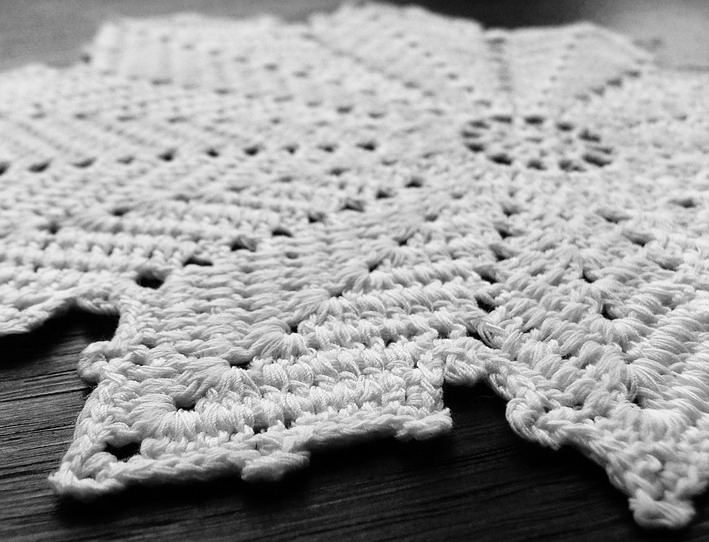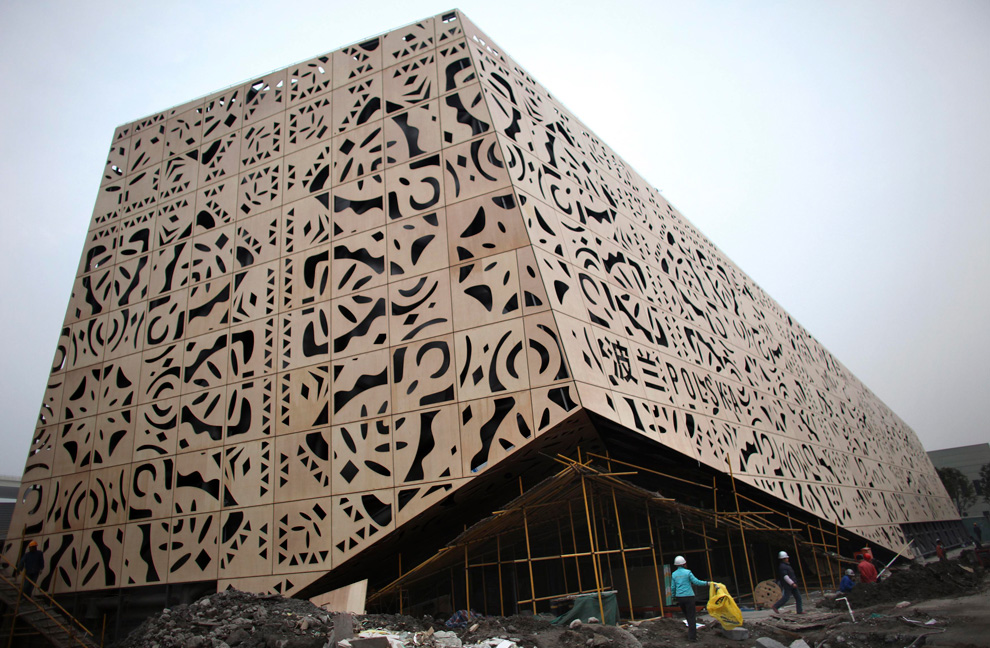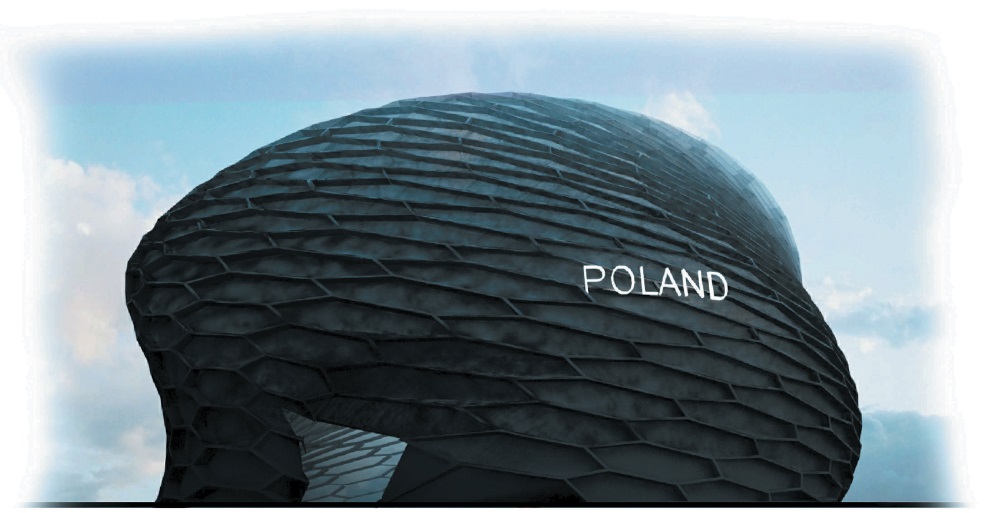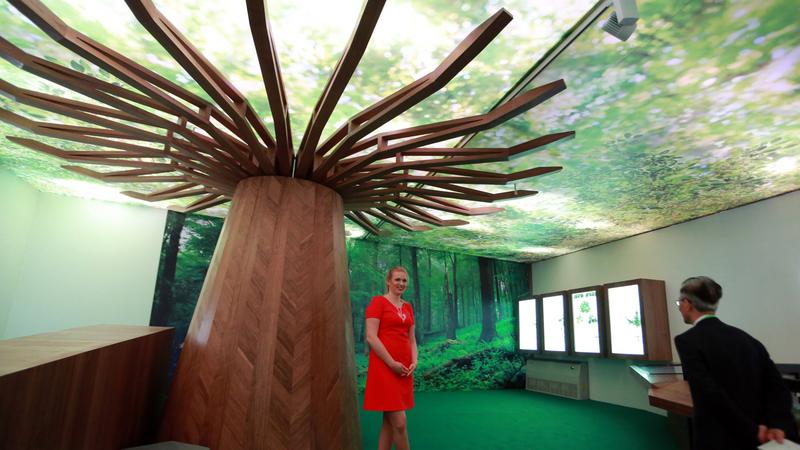|
|
Post by Bonobo on Jun 24, 2008 20:05:03 GMT 1
International Fair EXPO takes place every two years and is used by countries to promote themselves in the world.
From Expo '92 in Seville onwards, countries started to use the world expo more widely and more strongly as a platform to improve their national images through their pavilions. A large study by Tjaco Walvis called "Expo 2000 Hanover in Numbers" showed that improving national image was the primary participation goal for 73% of the countries at Expo 2000. In a world where a strong national image is a key asset, pavilions became advertising campaigns, and the Expo a vehicle for 'nation branding'. Apart from cultural and symbolic reasons, organizing countries (and the cities and regions hosting them) also utilize the world exposition to brand themselves.
Today's world expositions embody elements of all three eras. They present new inventions, facilitate cultural exchange based on a theme, and are used for city, region and nation branding.en.wikipedia.org/wiki/World%27s_FairEXPO 2008 in Saragossa, Spain The inside symbolizes sails of a yacht.    The most spectacular Polish pavillion so far was built in Japan, 2005. It looked like a wicker basket, attracted crowds of visitors and got the first prize for innovative design.     The Polish Pavilion was part of Poland's exhibit at Expo 2005. It was conceived as a metaphorical expression of the exhibit slogan 'See the Beauty' and represents the paradox of a form created on the computer - but with a traditional basketwork façade realized using the age-old crafts of Polish basket-making. The result is a dramatically organic and haptic recreation of a wicker basket, formed from complex layers of willow wands, which contrasts starkly with the utilitarian simplicity of the pavilion's industrial steel skeleton. www.contractworld.com/40844?x=1 The Polish Pavilion was part of Poland's exhibit at Expo 2005. It was conceived as a metaphorical expression of the exhibit slogan 'See the Beauty' and represents the paradox of a form created on the computer - but with a traditional basketwork façade realized using the age-old crafts of Polish basket-making. The result is a dramatically organic and haptic recreation of a wicker basket, formed from complex layers of willow wands, which contrasts starkly with the utilitarian simplicity of the pavilion's industrial steel skeleton. www.contractworld.com/40844?x=1European bizon named "Zubri" was the mascot of Polish presence at the Aichi Expo 2005.  The main theme of the EXPO 2000 in Hanover was "Man - Nature - Technology". The Polish programme, pavillion, exposition, regional presentation, as well as Polish mascot (the stork) and Polish National Day attracted much interest. The Polish exposition at EXPO 2000 was visited by 3.2 million guests over five months of the exhibition. According to the audience feedback, Poland was ranked fourth among 189 countries and organisations participating in the event. The main theme of the EXPO 2000 in Hanover was "Man - Nature - Technology". The Polish programme, pavillion, exposition, regional presentation, as well as Polish mascot (the stork) and Polish National Day attracted much interest. The Polish exposition at EXPO 2000 was visited by 3.2 million guests over five months of the exhibition. According to the audience feedback, Poland was ranked fourth among 189 countries and organisations participating in the event. text from here www.paiz.gov.pl/index/?id=361440528766bbaaaa1901845cf4152bThis is a design for EXPO 2010 in China. It resembles a giant Polish folklore lace cloth.       2000, an imitation of a traditional Polish village from the past www.a-z.com.pl/en/stoisko_expo.htmAn absolute hit of the 2000 exposition was the Polish mascot - the stork (Polish Pavilion was the only one where kids received mascots for free).  |
|
|
|
Post by Bonobo on Jun 28, 2008 18:18:07 GMT 1
Poland successful at EXPO 2008 and preparing for EXPO 2010
Polish Radio
27.06.2008
The project of the Polish pavilion for the 2010 EXPO has been
presented in Shanghai, which will host the event in two years. Will
it be as successful as this year's Polish presence at EXPO 2008 in
Saragossa?
Joanna Najfeld reports
The promotion of Polish presence at EXPO is part of the Polish Days
currently underway in Shanghai. Poland's exposition is a modern
building, whose elevation has a distinct folk feel to it.
Monika Koniecko of the office of the secretary general for the
Polish section of EXPO 2010 says the Polish project stands out
because of its original construction, merging modern and folk
themes: 'This time we will surprise the spectators with a beautiful
pavilion, in a surprising shape, very modern. The shape is of a
folded piece of paper and the elevation has folk ornaments carved
out in it.'
The Polish pavilion is supposed to become a center of promotion of
Polish culture, science and economy. A series of concert of Polish
classical music and open-air screenings of Polish films are also
planned for the event.
Poland has been doing very well on the EXPO 2008 in Spain. The
Polish pavilion, worth 8 million Euro, has been very successful in
attracting the attention of Spaniards, but also in deconstructing
stereotypes about Poland, says Maciej Pawlicki, the commissioner of
the Polish exposition: 'We are extremely satisfied, the
congratulations are coming from all over the place, both in terms of
what we decided to show and how. As usually, we had done research on what Spaniards think about Poland and it turned out we are people who they want to know, want to have as neighbors, but they know almost nothing about Poland. To them, Poland is a dark, distant, postcommunist poor and boring country and they are totally surprised when they see what they see at the Polish pavilion. They are completely astonished, they think we probably did these shots in Paris or Vienna, or Berlin. The Polish nature is also amazing to
them. We are somehow creating a feeling of shame in them that they didn't know it, that they haven't been in Poland, that they
should've done it so long ago.'
But Poland is not only about tourism. It is a creative, dynamic,
modern country and an important member of the European community
with many things to offer to other nations, also in terms of
economy, continues Pawlicki: 'The Polish pavilion is to resemble a
luxury sailing boat, Poland is a major producer and exporter of such
boats, and nobody knows about it, both in the West and in Poland,
because trademarks of these companies are not connected with Poland.
But when they see that Polish producers produce such luxury,
advanced, beautifully designed boats, they change their opinions
about Polish economy and technology. The pavillion is filled with
computer animations - very advanced and beautiful ones - they createan atmnosphere of a very beautifully designed fable or a fairy tale and it makes an extremely positive impact on visitors.
|
|
|
|
Post by valpomike on Jun 29, 2008 0:15:15 GMT 1
I think it is great!!!1
|
|
|
|
Post by Bonobo on Jun 29, 2008 19:58:20 GMT 1
I must agree with you, not because of my Polish patriotism, but because I like unusual engineering designs. |
|
|
|
Post by Bonobo on Mar 25, 2010 21:56:57 GMT 1
The Polish Pavilion for the Shaghai EXPO
25.03.2010 14:15
Polish preparations for the World Fair 2010 in Shanghai - the largest fair of this kind - are in full swing. The Polish Pavilion to be officially opened on May 1 is ready, and has evoked much admiration not only in China.
Danuta Isler reports
The pavilion is a light open work structure made of plywood and light steel which resembles the traditional Polish folk paper cut outs. It was designed by Warsaw architects Marcin Mostafa and Natalia Paszkowska with the use of CNC technology or computer navigated cutter method.
Boris Kudlicka, renowned interior and stage designer also the author of the Polish Pavilion at the Hannover Expo 2000 designed its interior. It took young designers two months to come up with a concept and a year and a half to design a tender project. They claim the result is a project inspired by tradition which is used in a completely modern way.
You can view it at www.polishpavilion.pl
www.thenews.pl/culture/artykul128206_the-polish-pavilion-for-the-shaghai-expo-.html    |
|
|
|
Post by Bonobo on May 1, 2010 19:00:47 GMT 1
The news is that the Polish Pavillion is a big hit of the EXPO which opened today.
Poland at Shanghai Expo 2010
01.05.2010 00:28
The Polish Pavilion officially opened on Saturday at the 2010 World Expo in Shanghai.
A concert on one hundred pianos, an exhibition of street art stickers, Chopin’s club night and an animated film about the history of Poland made by Oscar nominee Tomasz Baginski are just some of the attractions to watch and listen to at the Polish Pavilion in the Expo Park in Shanghai.
Even before its opening the Polish Pavilion has evoked much admiration and is regarded as one of the top six designs at Shanghai Expo, according to its organisers.
The pavilion itself is a light open work structure made of plywood and light steel which resembles the traditional Polish folk paper cut outs. It was designed by Warsaw architects Marcin Mostafa and Natalia Paszkowska, and the interior was designed by renowned interior and stage designer Boris Kudlicka, film director Boris Lankosz and documentary film maker Andrzej Fidyk.
The project was inspired by Polish tradition but used in a completely modern way.
“We don’t want a traditional loaf of bread on a burdock leaf or young women dressed in traditional folk costumes. We want to promote Poland in a modern way. Therefore, in our pavilion visitors will be able watch hi-tech multimedia shows with special effects and smoke. It will be magical, a bit like a video clip,” says Slawomir Majman, head of Poland’s agency for foreign investment.
The Polish Pavilion, under the motto “Poland is smiling”, will also host several art and business events and Polish-Chinese debates and will be the biggest promotion campaign of Polish business and culture ever staged in Asia.
|
|
|
|
Post by Bonobo on May 2, 2010 19:33:08 GMT 1
Paper-cutting structure unfolds display
Date:01/05/2010
Poland will turn its Expo 2010 pavilion into a disco venue through the fair by inviting visitors to sing and dance at night, the pavilion's operators announced today.
The team with the pavilion hopes to create fun and joy by designing the programme, which will be a good way for visitors to release pressure, said Slawomir Majman, commissioner general of the country at the pavilion's opening ceremony this morning.
When visitors step into the pavilion, they will be greeted by a paper-cutting dragon traveling all the way from Poland. The dragon appearing on a large screen conveys the message of the similarity between two cultures, Majman said.
An eight-minute animated film will take visitors through a journey of Poland's history, and innovative pieces of Poland's industry are on display.
The inner solid walls of the pavilion are functioning as screens, on which scenes of Polish city life are projected.
Wang Xiubao, consultant of the Bureau of Shanghai World Expo Coordination, said the pavilion reflects Poland's innovation and creativity, where visitors will experience the charm of the country and understand the country's presentation on the theme of "smiling."
The 3,000-square-metre pavilion, mainly made of wood, gives the impression of a huge paper cutout building, tilted slightly upward from the ground.
During daytime, the exhibition hall will be filled with light filtering through paper-cutting patterns. At night, it will shine with different colors.
Poland is known for its traditional paper-cutting. en.expo2010.cn/a/20100501/000004.htm
|
|
|
|
Post by Bonobo on Jun 23, 2010 18:45:52 GMT 1
Paradoxically, the Polish Pavillion attracts so many people that it has fun into trouble.
Cash strapped Polish Pavilion at Expo 2010
23.06.2010 18:32
The Polish ‘Pavilion ’exhibition at the 2010 Expo in Shanghai has been a crowd puller, but the organizers are struggling from lack of funds after larger than expected crowds.
The financial trouble is because initial forecasts indicated a Polish monthly share in the number of visitors to the various exhibits to be from 2 to 3 per cent, explains Slawomir Majman, Poland’s Expo commissioner and head of the Polish Information and Foreign Investment Agency (PAIiIZ), while the actual figure stands at 10 to 12 per cent.
This shows the Polish pavilion in Shanghai has already been visited by some 1.5 million Chinese, or over 30,000 people daily.
Deputy economy minister Rafal Baniak stresses this interest has translated into concrete trade effects. For instance, the Polish Rail Cargo company has signed a contract with Chinese Rail on the production of freight cars within a joint venture project. Another example are agreements on Polish food exports to China.
According to the initial plan, the Polish exhibition in Shanghai was to cost around 32 million euro. Then, due to the necessity of cutting expenditure, the sum was reduced to some 12 million euro. Deputy economy minister Baniak says additional funding is speedily required to maintain the present scope of the Polish offer at Expo 2010. A chance for this could be provided by assistance from new sponsors or making use of EU funding.www.thenews.pl/business/artykul134206_cash-strapped-polish-pavilion-at-expo-2010.html |
|
|
|
Post by Bonobo on Jul 25, 2010 23:17:27 GMT 1
Good job, Poles!
The Polish pavilion at the 2010 EXPO in Shanghai continues to attract record numbers of visitors.
The Polish Information and Foreign Investment Agency (PAIiIZ) has announced that the national exhibit has drawn the interest of over 2.7 million people, by mid July. This amounts to an average of 35,000 ticket holders daily.
Chinese media have given expansive and frequent coverage of the Polish Expo presentation with some 850 journalists focusing on the cultural, tourist and economic packages in more than 400 articles and several reports on major television channels.
An addition sign of positive reaction have also been the 250 foreign delegations visiting the Polish pavilion to build connections and search for attractive offers. www.thenews.pl/international/artykul135664_polish-pavilion-in-shanghai-draws-crowds.html |
|
|
|
Post by Bonobo on Oct 27, 2010 21:24:19 GMT 1
Polish exhibition at EXPO 2010 records eighth million visitor
27.10.2010 09:51
Polish Pavilion at EXPO 2010
The Polish Pavilion at EXPO 2010 in Shanghai has been visited so far by over eight million people, making it one of the most popular exhibits at the world trade fair.
The eighth million visitor was Xie Wei, an accountant from the city of Zhongshan in Zhejiang province, who received a special award.
"This is my first time at the Expo and I came to the Pavilion, because I think Poland is a beautiful nation. I am very pleased with this award, it feels like in a dream," Xie Wei told Polish Radio.
Expo 2010 ends next Sunday. Within six months more than 71 million have visited the world trade fair - a record number - with every tenth person visiting the Polish exhibition.
|
|
|
|
Post by Bonobo on Sept 16, 2017 18:23:41 GMT 1
Polish pavilion wins gold at Expo 2017 in Astana 11.09.2017 10:00 Poland's pavilion has won a top interior design prize at the 2017 Expo in Astana, which closed on Sunday. Poland's three-storey pavilion won in the smallest, up-to-400-square-metres category. At the Future Energy themed expo, Poland showed off a number of technologies including one which could turn coal into gas. At the pavilion, one could see how coal was made and get a sense of Polish forests through smell and animal sounds. The 93-day expo officially closed on Sunday. It was visited by nearly four million people, about 300,000 of whom took a look inside Poland's prize-winning pavilion. (vb/pk)   |
|










































